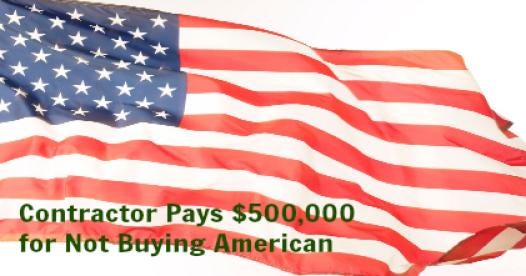Consumer products companies may be eager to use Made in the USA labels to advertise, particularly given the political climate and increased publicity around domestic manufacturing. But they must pay close attention to the state and federal laws that regulate what Made in the USA actually means.
In August, we wrote about the Federal Trade Commission (FTC) regulations that governed Made in the USA claims and enforcement during the last two years of the Obama administration. No one knows precisely how the FTC will regulate going forward, but private plaintiffs are still filing lawsuits—including under state labeling laws and consumer fraud statutes.
California Class Action Alleges New Balance Not “Made in the USA”
In December, plaintiffs filed a proposed class action in the U.S. District Court for the Southern District of California alleging that New Balance Athletics, Inc. violated the recently amended California labeling law. The new California law, which took effect on January 1, 2016, requires that 90-95 percent of a product’s value must be domestic for the product to be labeled Made in the USA. The lawsuit, Dashnaw v. New Balance Athletics, Inc., cites the New Balance website, social media posts, and labels stating that certain shoes are “Made in the USA,” even though other company statements state that the shoes are 70 percent domestic-made, which is below the threshold required by state law.
California is the only state with its own Made in the USA law. The earlier version of the law did not allow any foreign components in a product labeled Made in the USA, but the amendment gives manufacturers a bit more leeway like the FTC standards. Now products can be labeled Made in the USA in California as long as the foreign components are “not more than 5 percent of the final wholesale value of the manufactured product.” If a manufacturer can show that it cannot source certain components domestically, then the foreign components can be as high as 10 percent.
New Balance’s 70 percent advertising likely attracted the attention of plaintiffs’ counsel since on its face 70 percent is lower than the 90 to 95 percent threshold in the amended code. New Balance and plaintiffs will likely fight over how the 70 percent is derived and how the courts should interpret the language of the new law. Many things go into a single product: different components, varying material costs of those components, and several different phases of labor costs. For that reason, calculating a specific percentage isn’t easy.
Consumer Fraud Acts Pose a Danger Outside California
Plaintiffs are also turning to state consumer fraud statutes to file Made in the USA claims. But a recent effort in Illinois was unsuccessful. In deMedicis v. CVS Health Corp., CVS won a preliminary victory on its motion to dismiss in a vitamin C supplement class action in U.S. District Court for the Northern District of Illinois, though the court order gave the plaintiff 30 days to amend the complaint.
In that case, the plaintiff brought causes of action under the Illinois Uniform Deceptive Trade Practices Act, Illinois Consumer Fraud Act, and similar consumer frauds acts of other states.
In its motion to dismiss, CVS attacked the plaintiff’s failure to show actual damages proximately caused by the alleged deception. The court noted that the plaintiff did not allege that he would not have purchased the supplements without the Made in the USA label or that CVS charged more because of this labeling. The court also held that the plaintiff was not entitled to injunctive relief because he now knew of the alleged foreign ingredient and would not be deceived by the labels in the future.
State consumer fraud acts give plaintiffs an opportunity to challenge inaccurate labels, even in the 49 states that do not have a Made in the USA law. Companies should exercise caution in adding Made in the USA to existing products and in reviewing their marketing strategies. While Made in the USA labels have certain business benefits, these labels must be accurate to avoid the risk of civil litigation.



 />i
/>i

